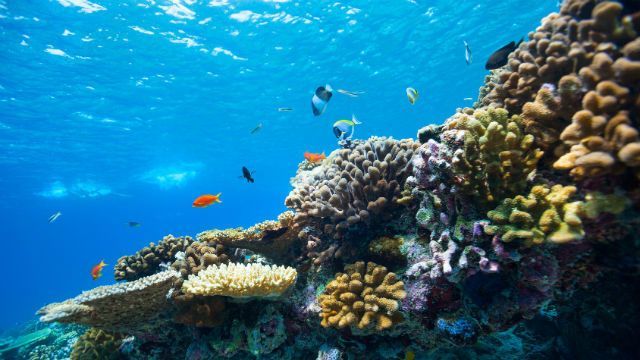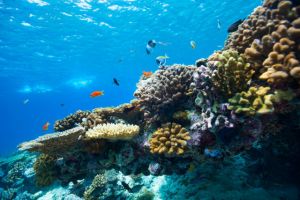
If you were to go scuba diving off the east coast of the United States, you might see something unexpected. Swim far enough from the shore, and you’ll find a community of fish and other sea life living happily in…old subway cars!
In fact, since 2001, over 2,500 New York subway cars have been dropped into the ocean; these cars form 15 underwater reefs that support the life of fish and crustaceans.
Although dumping waste and scrap materials into the oceans is almost always thought of as a bad thing, in this situation it seems to have been beneficial for ocean life. One of the managers of the program, Jeffrey Tinsman, told CNN:
“We’ve been monitoring the carbon steel subway cars and they are holding up well…. They are still three dimensional, and provide thousands and thousands of square feet of hard surface for invertebrates to live on, some of which, such as blue mussels, could not live on the sand bottom that is naturally there.”
Tinsman continues, “when you compare the amount of food available on this reef to the natural amount, there is 400 times as much food per square foot as the sand bottom.” He also explains that some species of fish benefit from them more than others, saying, “black seabass are not fast swimmers, so need structure to provide both food and shelter; they wouldn’t, for example, be able to outswim a shark, but they could duck into the shelter instead.”
And fish are not the only ones who benefit. According to Press of Atlantic City, many fishermen also support the project, because it attracts so many fish and lobster.
So how did this project come about? 15 years ago, Metropolitan Transportation Authority (MTA) was looking for the least expensive way to dispose of NYC’s old subway cars. Sinking the subway cars into the Atlantic allowed them to both help the environment and save money. In fact, it cost them about half as much as selling the cars for scrap. Using them to create reefs also allowed the MTA to escape the expensive and time-consuming process of removing asbestos from the cars.
Although the asbestos in the cars was a concern for some groups when the project was being conceptualized, the EPA determined that the asbestos was unlikely to dissolve or enter the food chain, and thus posed little risk to the ocean and its inhabitants.
 Historically, the most common and accepted way to create artificial reefs was to deliberately sink ships. However, this practice was banned in 2012, as it was thought to release heavy metals and harmful chemicals like PCBs into the oceans. So far, however, the New York subway car reefs have managed to escape criticism of this nature.
Historically, the most common and accepted way to create artificial reefs was to deliberately sink ships. However, this practice was banned in 2012, as it was thought to release heavy metals and harmful chemicals like PCBs into the oceans. So far, however, the New York subway car reefs have managed to escape criticism of this nature.
For those interested, there some powerful photos of the cars being sunk into the Atlantic available here. More images from the photographer, Stephen Mallon, are being featured at NYU’s Kimmel Galleries from February 6 to March 15.
What do you think? Is this an example of an amazing way to protect and encourage ocean life? Or is it a poor excuse for the government to dump its trash into the sea?
-The Alternative Daily
Sources:
http://www.pressofatlanticcity.com/opinion/editorials/another-artificial-reef-enough-already/article_761402e2-04d0-5d49-99bb-4d5ba42f0435.html
http://www.ban.org/2012/09/06/u-s-government-ends-the-sinking-of-old-shipsas-artificial-reefs
http://www.scientificamerican.com/article/the-submerged-subway-reef
http://www.cnn.com/2015/02/26/world/subway-cars-coral-reef/index.html
http://www.citylab.com/commute/2015/02/the-fantastic-transformation-of-subway-cars-into-artificial-reefs/385877

